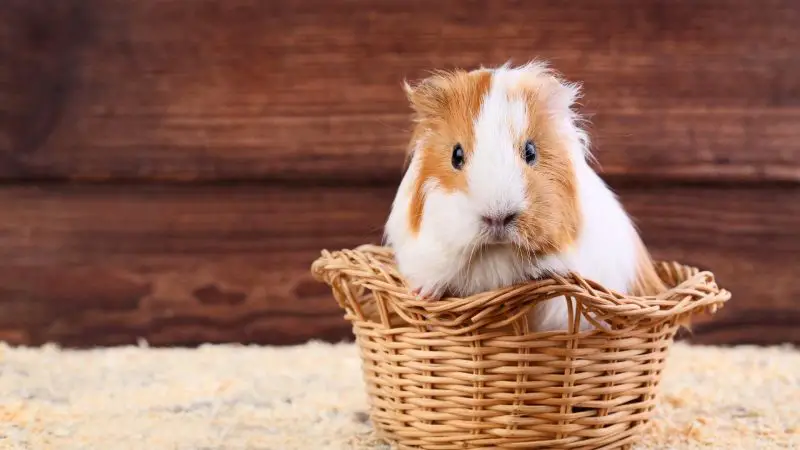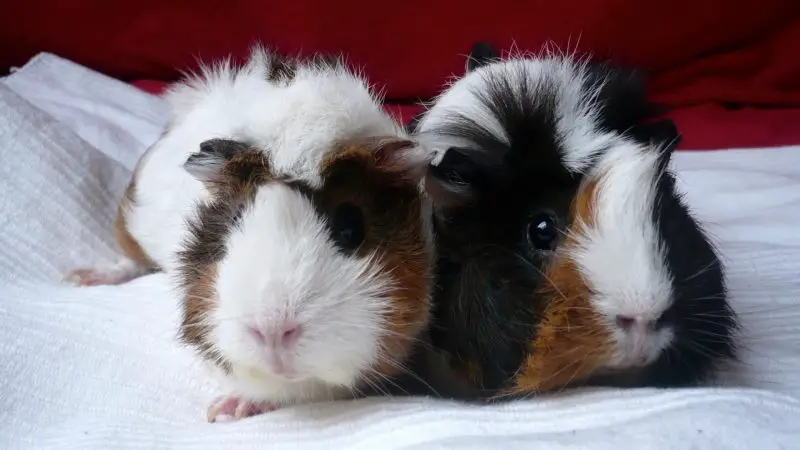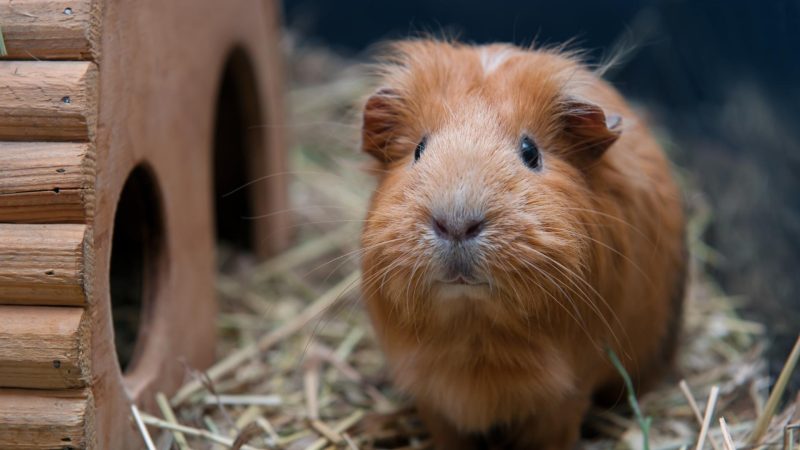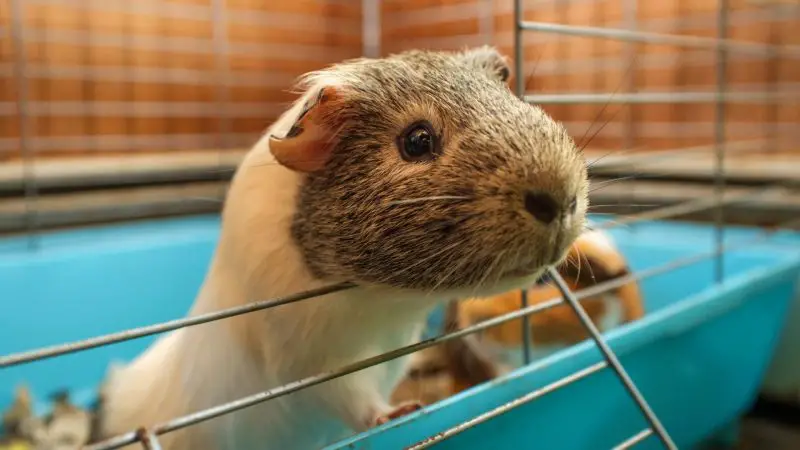Are you a proud guinea pig owner who lives in a country with drastic temperature changes throughout the year? Then, it is essential to figure out how you can keep your fluffy ball of happiness warm during the colder months and cool during the hot time of the year.
What is a guinea pig temperature tolerance? Temperatures between 19°C and 22°C (68°F and 72°F) are appropriate for guinea pigs. The temperature range that guinea pigs can endure is somewhat limited. The guinea pigs are far more resistant to cold than they are to hot temperatures.
In this article, we are going to provide you with a detailed temperature tolerance guide for your guinea pigs. Let’s start!
Table of Content
What Are the Ideal Environmental Conditions for Your Guinea Pig?

Before we get any further, we have to find out what are the optimal conditions for guinea pigs. The truth is that guinea pigs get uncomfortable when the temperature is not right, just like us, humans.
In fact, guinea pigs are even more sensitive to drastic temperature changes. In the most severe cases, the stressful conditions might damage the little guinea pig’s health or even lead to death.
That’s why maintaining an optimal temperature is crucial for the guinea pig’s well-being. And you, as a wonderful owner, should try to do everything to ensure that your guinea pigs live in comfort.
What Is a Guinea Pig’s Temperature Tolerance?

The ideal temperature conditions for guinea pigs are between 19°C and 22°C (68°F – 72°F). They will not feel extremely bad if the temperature drops to 15°C and 18°C (59°F – 64°F).
The range of the temperatures that guinea pigs can tolerate is not that wide. The guinea pigs can handle cold a lot better than high temperatures.
That’s exactly why you have to make sure that the guinea pig has a place where it can hide and relax in the shadow. Temperatures over 30°C can be dangerous for the guinea pig. So, do not leave the fluffy ball under direct sunlight.
Here are the things that you have to take into consideration when choosing the right place to put the cage of your guinea pig.
- Stable temperature – The actual temperature is not the only thing that matters. Ideally, the conditions have to be relatively stable so that your guinea pig has a chance to adapt to them.
You might already know that guinea pigs are vulnerable and gentle animals that can easily get stressed out. Of course, a change in the temperature can become a real big stress factor for the little fellows.
- A dry environment – Humid conditions are not suitable for a guinea pig. That’s exactly why you can’t keep the cage in the bathroom, for example. We all know that various bacteria love damp environments. If it’s humid, the chances of your guinea pig getting ill will drastically increase.
- The place should be wind free – It’s not a great idea to place the cage right next to the window that tends to be open or in the doorway. The guinea pig can easily catch a cold. So, ensure that the place is as wind free as it can possibly be.
- A bright room (with no direct sunlight) – Natural light is important because it helps animals absorb vitamin D. However, direct sunlight can be irritating. Moreover, even if the temperature in the room is great for the guinea pig’s well-being, it certainly is much higher under direct sunlight.
How to Take Care of Your Guinea Pig During Winter Months?

Unfortunately, it is not always possible to keep the temperature steady and warm (even if we are talking about the living room, for example). The heating might go off or there might be a sudden drop in the temperature at night.
Thankfully, there are some relatively simple measures that you can take to ensure that your precious guinea pig will not suffer from low temperatures.
1. Get Another Guinea Pig
It is always better to have more than one guinea pig as the little lads are extremely social animals that can literally die of loneliness. But if for some reason, you have had only one guinea pig, then the winter months might be the best time to consider adopting another fluffy ball. These creatures are great at keeping each other warm!
However, do bear in mind that introducing a new guinea pig to the cage might be challenging. Make sure to take your time and pay close attention to the relationship between the guinea pigs.
2. Lift the Cage
Even if you keep the cage inside the house, the chances are high that the floor is cold. During the winter months, place the cage on a few blankets, on wood or bricks.
3. Make Changes to the Guinea Pig’s Diet
You might already know that guinea pigs cannot produce vitamin C. And just like us, humans, they are going to need even more of this vitamin to be able to stay healthy during the winter months.
Find the pellets that have vitamin C added to them. Don’t forget about fresh fruits and vegetables and make sure to consult your vet as sometimes your guinea pig might even need vitamin C supplements.
4. Bring Nature Inside
Guinea pigs love running on grass, but they can’t really do that during the colder months. You can grow your own greens and herbs (that are safe for guinea pigs, of course) and then let your precious pet enjoy the results.
5. Use Blankets, Socks and Even Hot Water Bottles
The cage needs to have some keeping warm options that your guinea pig can use whenever it feels like it. First of all, the guinea pig has to have enough fresh hay at all times. Hay is not only a thing to nibble on, but also an amazing heat insulator that the fluffy ball can use to keep warm.
You can cover the cage with a blanket or cardboard for that extra warmth. But always make sure that the air can still circulate. Use guinea pig hides and pouches that they can snuggle up in.
You can also go with the DIY way. Stuff a sock with rice and heat the thing up in the microwave – the ‘toy’ will be warm for hours.
Simply remember that safety comes first and the sock should not be too hot and the rice should stay inside. Hot water bottles with thick covers can also do the job.
6. Make Sure That the Room Is Warm and Draft Free
It’s ok to use heaters if you want to make the room warmer. However, never leave the heater on when there is no one at home. Make sure to place the thing at least a few feet away from the cage as it is full of fire hazardous elements.
Moreover, make sure to place some blankets, for example, at the openings of doors to ensure that there is no draft in the room.
How to Take Care of Your Guinea Pig During Summer Months?

Low temperature is not the only thing that can be dangerous for the guinea pig’s health. In fact, hot weather is even more challenging for the little guys as they cannot sweat and adequately regulate their body temperature.
You can do the following ways for your guinea pig if it is surprisingly hot outside:
- Provide enough shade. It is important for a guinea pig to have a hiding place at all times. However, during summer it is double as important, as the hiding places also provide enough shade and will help the little guy cool down a bit. Various covers and small houses will do just fine.
- Beware of direct sunlight. Do not place the cage under direct sunlight. Even if the guinea pig has a hiding place, the temperature there will rise drastically, if kept under direct sunlight. So, do avoid that at all times.
- Your guinea pig will need more water. Just like us, guinea pigs tend to drink more during the warmer months. Make sure that there is enough fresh, clean water all day long. You might even want to consider placing an additional water bottle or bowl in the cage during the summer.
- Consider giving more watery fruits and vegetables. To help the guinea pig get more water into its body, try to give it more watery veggies and fruits. Cucumbers and bell peppers, for example, are amazing options. But you can totally do your own research to find out what your guinea pig prefers. It is important to give your beloved pet fresh food at least once a day.
- Clean the cage more often. It is logical that if your pet drinks more water, it would need to go to the toilet more often. Keeping the cage clean would be a bit more time-consuming during the hotter months. However, it is extremely important to clean as a dirty and humid environment is the ideal place for bacteria.
- Remove excess hair. Summer is the perfect time for a new haircut especially if your cavy has long hair. You can also brush the little guy a little more often than usual to make sure that there is no excess hair keeping the fluffy fellow too warm.
- Make a DIY refreshment – Once again, if you are into DIY, you might want to do your own research. Some owners like to wrap an ice cube in a blanket and leave the thing in the cage so that the guinea pig can use the new toy to cool down a bit. However, a melting ice cube means water all over the cage, so it would certainly be better to modernize the method a bit.
Now, you are practically an expert when it comes to the guinea pig and their temperature tolerance. Always remember that safety comes first, so do take that into consideration whenever you are making any changes to your fluffy ball’s lifestyle.
